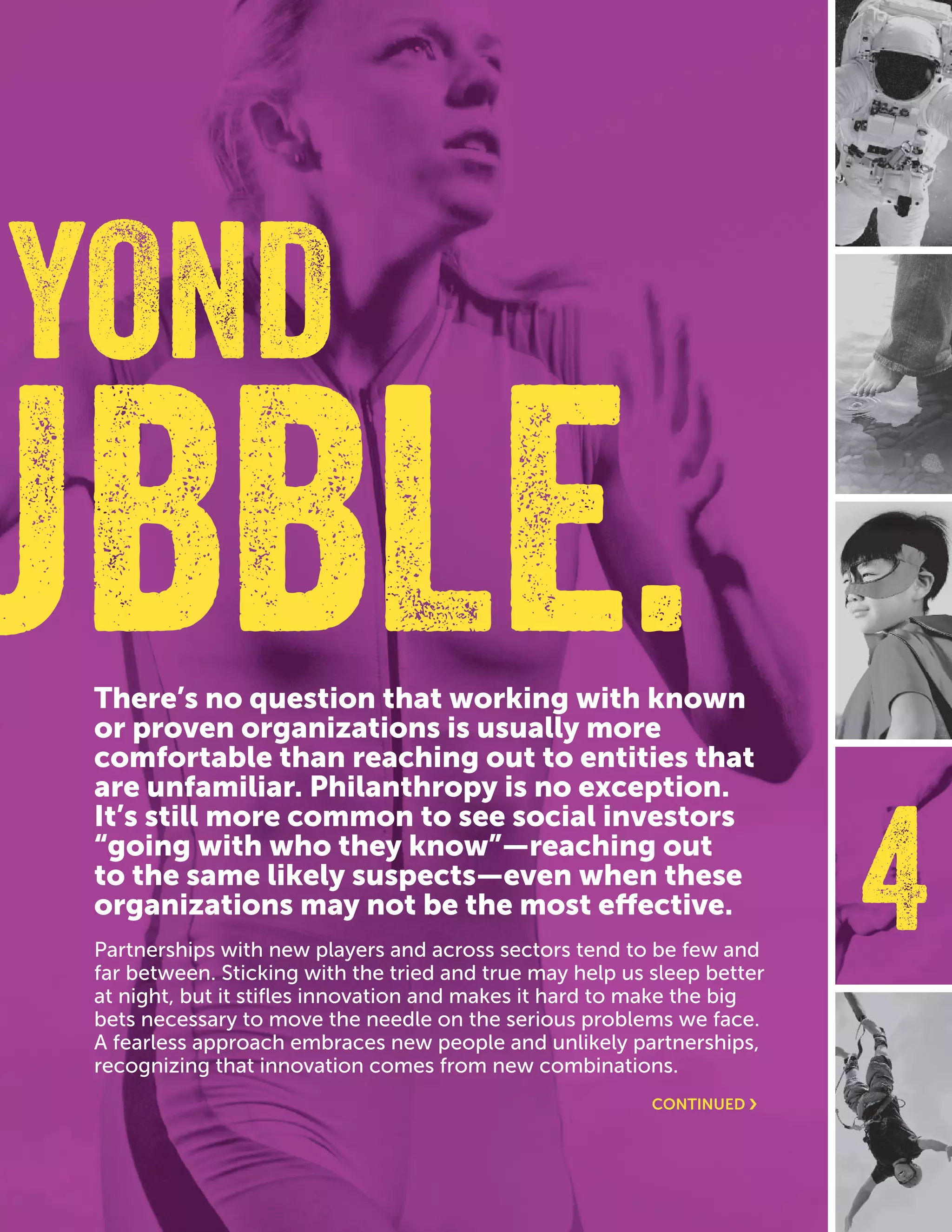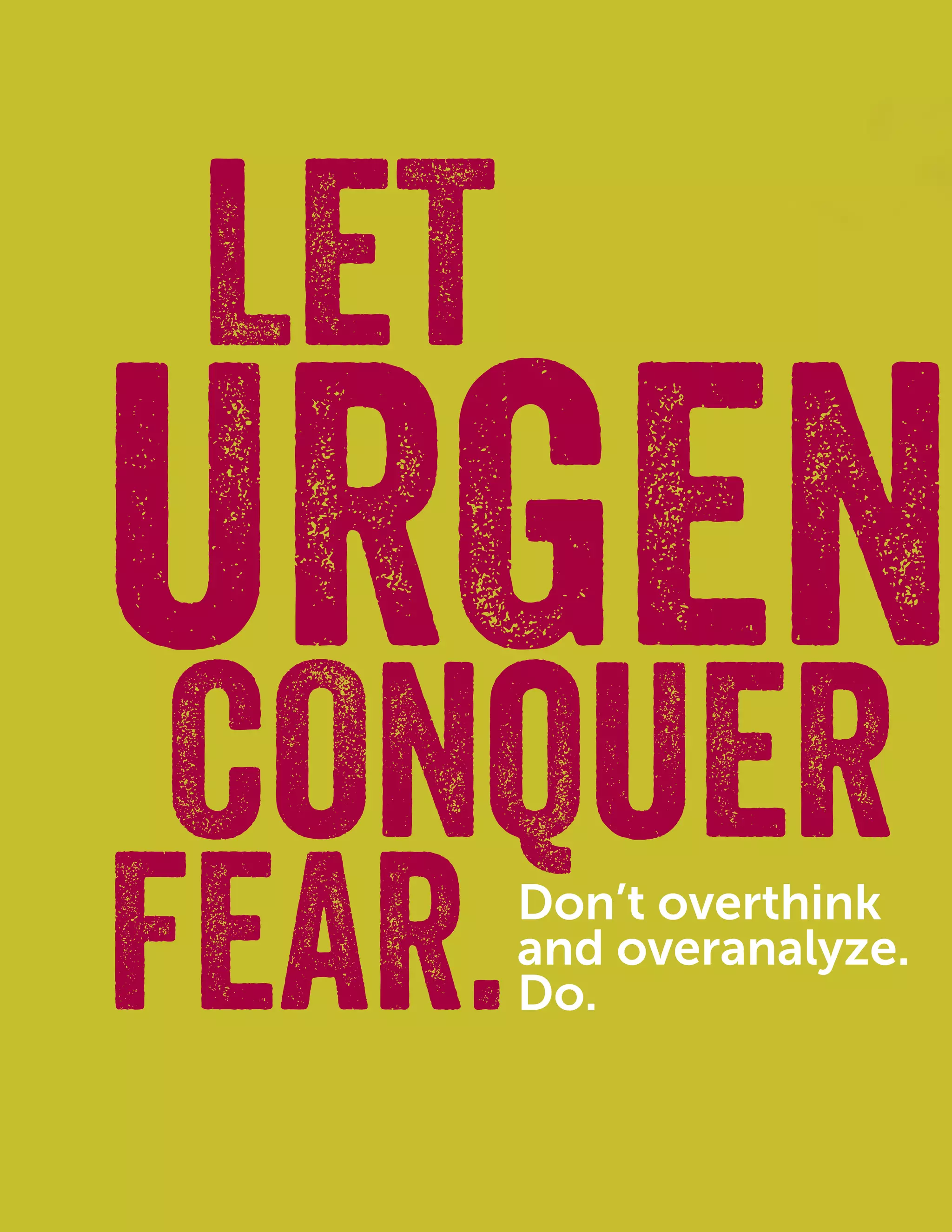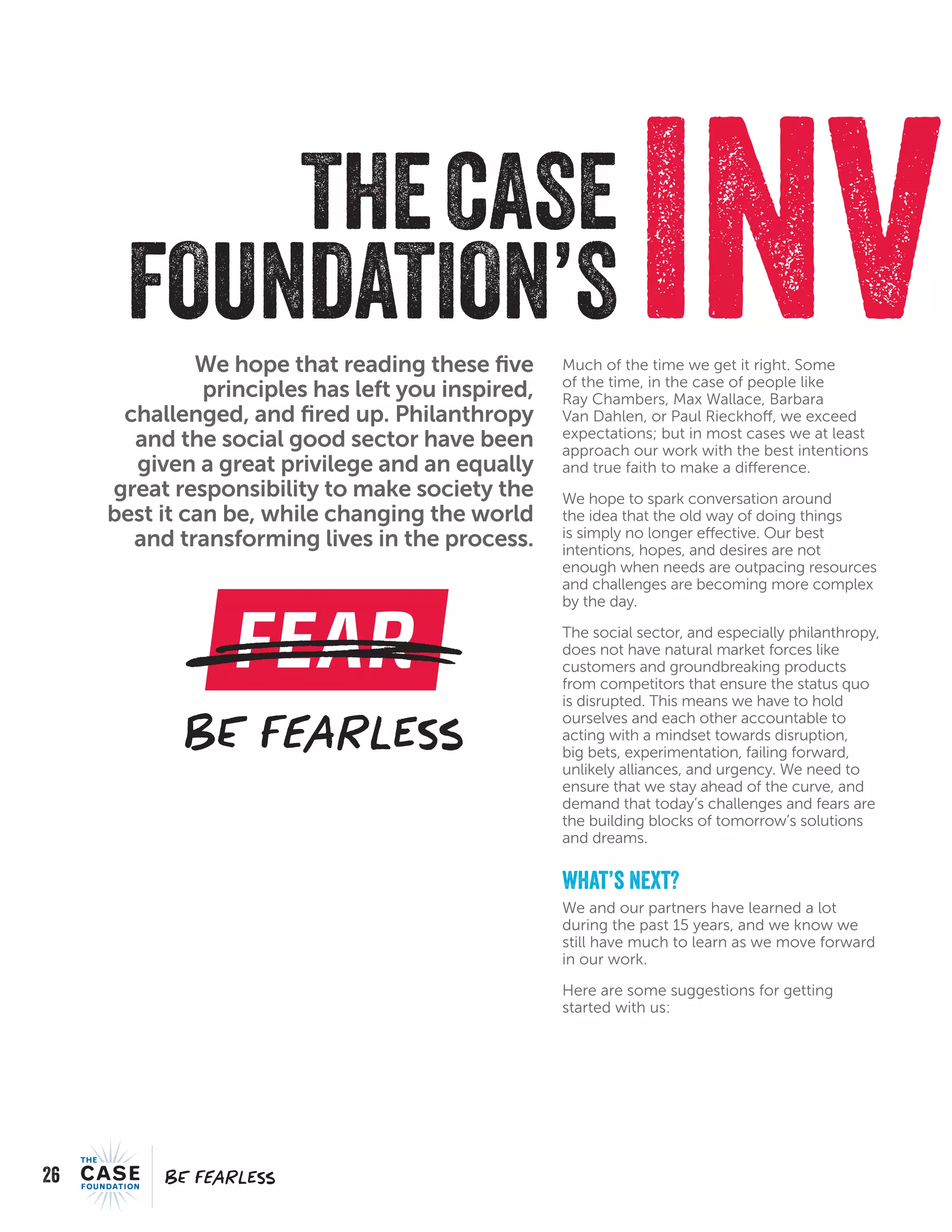The document discusses the importance of being fearless in creating change. It advocates for experimenting early and often to continually innovate and respond to new challenges. Examples are provided of companies like Apple and Southwest Airlines that successfully experiment with new approaches rather than resting on past successes. The document promotes developing minimum viable products and gathering early feedback to incorporate lessons learned quickly.

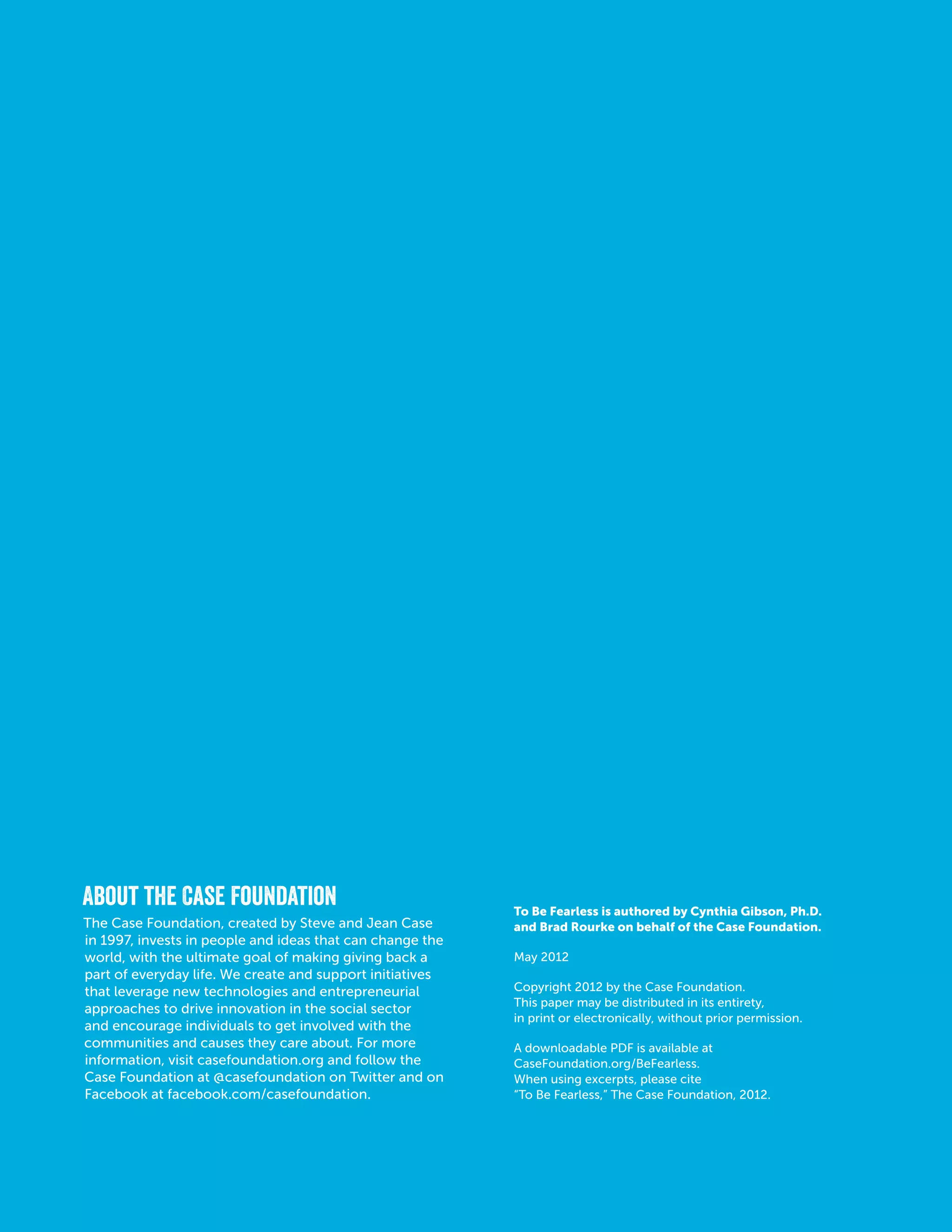




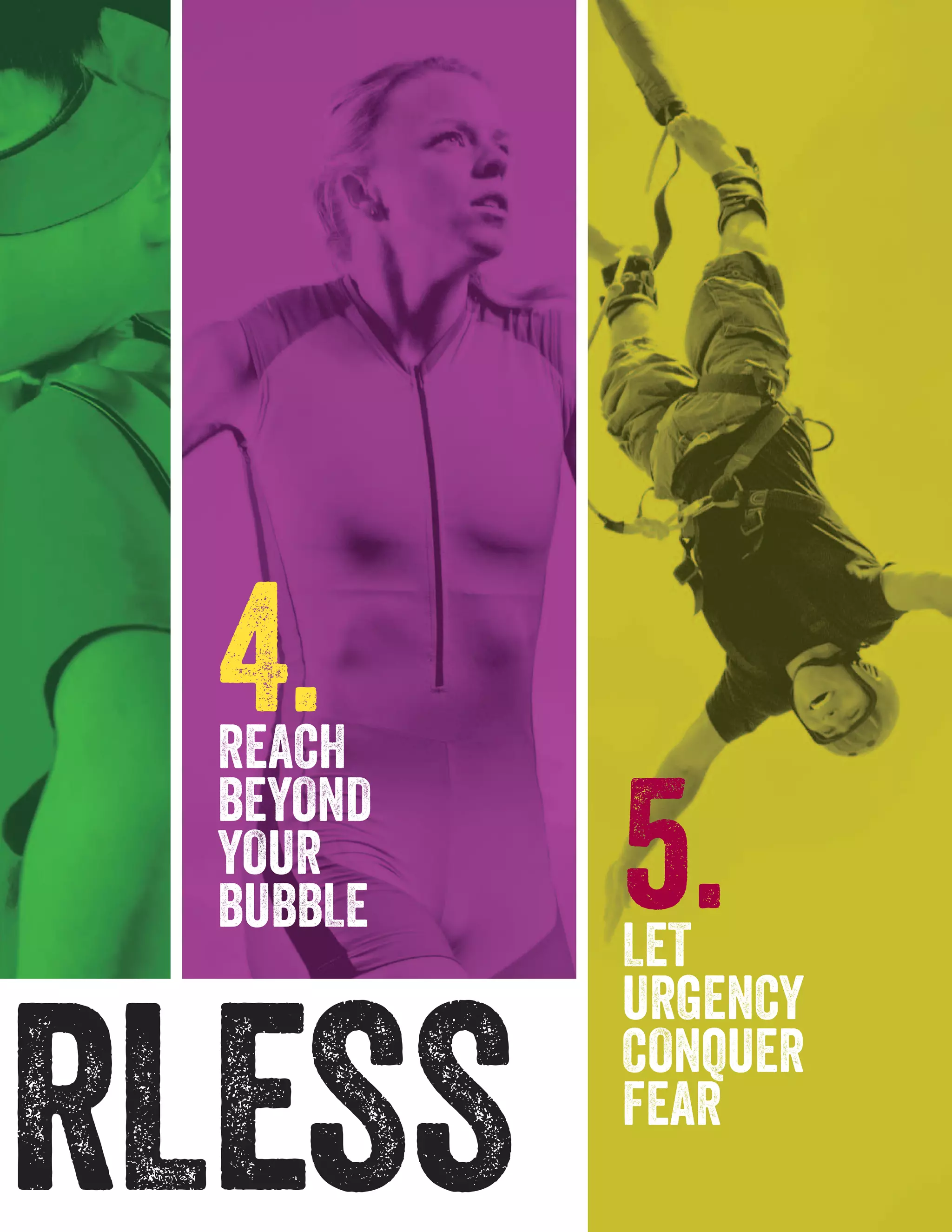

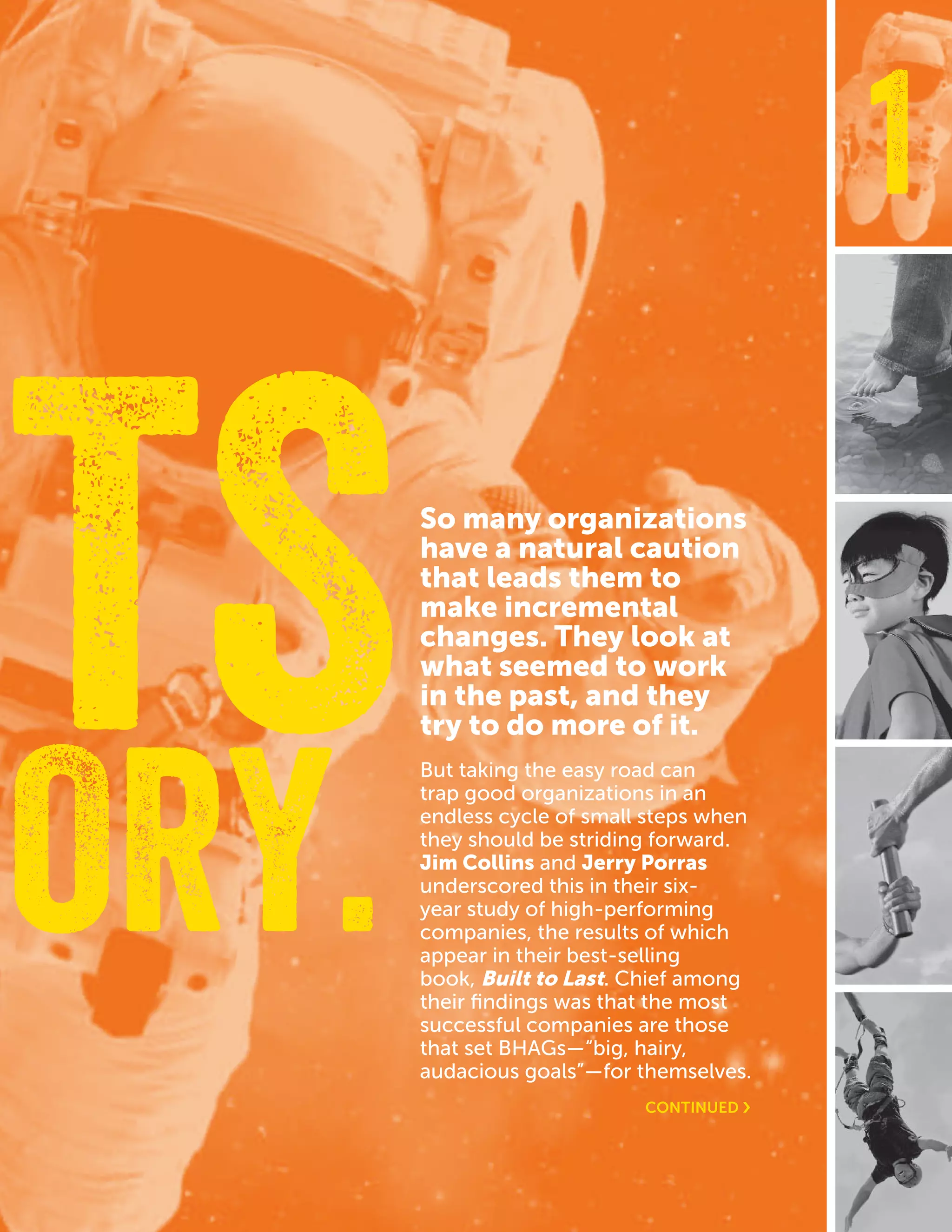
![8
FEARFEAR
In the Harvard Business Review, Collins and
Porras defined a BHAG “as clear and compelling,
a unifying focal point of effort, and a clear catalyst
for team spirit. […] It has a clear finish line, so the
organization can know when it has achieved the
goal; people like to shoot for finish lines.”i
History suggests that the most significant cultural
transformations occur when one or more people
simply decide to try and make big change, rather
than move incrementally. In the face of the Soviet
launch of Sputnik, for example, President John F.
Kennedy challenged America to shoot for landing
on the moon—not just to improve its aerospace
capabilities. Thomas Edison didn’t simply try to
make a better candle, rather he proudly proclaimed
his [audacious] goal to “make electricity so cheap
that only the rich will burn candles.” The founders
of our country didn’t stop at trying to negotiate
their grievances; they chose to start a revolution
that would honor their beliefs and that led to the
establishment of a new nation.
The idea of placing such a clear stake in the ground
is well-established in the business world, and many
of today’s best companies have articulated their own
big bets. Amazon, for instance, is well on its way to
achieving its BHAG: “Every book, ever printed, in any
language, all available in less than 60 seconds.”
Admittedly, it may be easier to make big bets and set
audacious goals in the private sector, rather than in
the social sector, because there are more financial
resources and incentives to do so, and because
the success measures are clearer. But that doesn’t
mean the social sector can’t or shouldn’t try. In
fact, given the enormous and complex challenges
facing people around the world—poverty, global
warming, illiteracy, and conflict—setting these kinds
of BHAGs are more important than ever for those
organizations working to end them.
Today’s Big Bets
Fortunately, there are people who straddle the
private and social sectors who are comfortable with
BHAGs—people like Ray Chambers, the United
Nations’ special envoy for malaria. Ray Chambers has
long been a quiet philanthropist, even though he is
an acclaimed financial mind who is responsible for
helping to rebuild his home city of Newark, NJ. His
fingerprints can be found on the creation of some
of the most influential social good organizations in
the United States, including the National Mentoring
Partnership, America’s Promise, and the Points of
Light Institute. His humble but steadfast approach
could easily be held up as an example for any of the
Fearless Principles in this document, but his big bet
on malaria is especially game-changing.
In some parts of the world, malaria kills a child every
minute of every day. In Africa, it drains 40 percent
of the continent’s healthcare resources, even
though the disease is preventable and treatable. The
only possible way to tackle a huge issue like this,
Chambers thought, was to set an audacious goal that
would activate exponential amounts of energy and
resources. So, instead of just pledging to reduce the
yearly number of malaria deaths, Chambers set out to
eradicate all of them by 2015.
This unabashedly bold goal inspired a number of
organizations to join together to form a new coalition
dedicated to achieving it. Those organizations include
Malaria No More (which Chambers co-founded),
Roll Back Malaria, the United Nations’ Nothing But
Nets, and the Bill and Melinda Gates Foundation.
Along with other groups, this coalition has launched
prevention efforts that so far have helped reduce
malaria deaths in Sub-Saharan Africa by more than 33
percent since 2000, and it is on track to make even
bigger gains toward total eradication of the disease.
HISTORY.
MAKE
BIGBETSAND
MAKE](https://image.slidesharecdn.com/fearless-principles-161223135453/75/Fearless-principles-10-2048.jpg)










